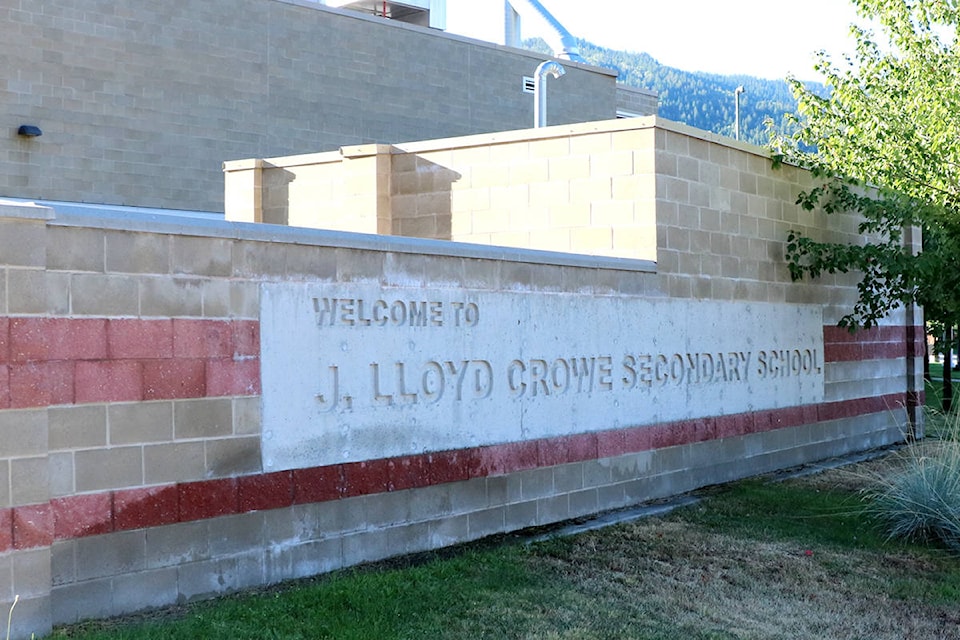Trail’s J. L. Crowe high school is one of the top public secondary schools in the province, according to the Fraser Institute’s Report Card.
The Fraser Institute released its Report Card on British Columbia’s Secondary Schools 2020 earlier this month, which according to the Institute is the most easily accessible tool for parents to compare the academic performance of their children’s schools.
“Parents should use this Report Card every year to see how their child’s school is doing, and if necessary, ask the principal how he or she plans to turn things around,” said Peter Cowley, senior fellow at the Fraser Institute.
J. L. Crowe ranked 31st of 252 secondary schools including independent schools in the province, and seventh overall among public schools with an 8/10 overall score.
Despite its good grades, J. L. Crowe principal Aaron McKenzie says most teaching professionals take it with a grain of salt.
“That’s nice to hear, but I think the piece that always has been a problem, people don’t like the Fraser Institute (Report Card) because of the ranking component,” said MacKenzie. “We’ve always treated those assessment pieces as snapshots.”
Grand Forks Secondary earned the top score among West Kootenay-Boundary schools with an 8.2, ranking 25th of all high schools and fourth among BC public secondary schools. Nelson’s L. V. Rogers scored 6.3 and was 107th on the list, while Stanley Humphries Secondary in Castlegar received a 5.4 grade and 160th.
Crowe was up from 2018’s mark of 7.2, still well above the average mark for schools across BC at 6.0.
Many schools no longer use standardized provincial exams for testing, but transitioned to Numeracy and Literacy Assessments that focuses more on comprehension, critical thinking and reasoning.
The Report Card ranked 252 public and independent secondary schools based on six academic indicators using student results from annual provincewide exams, grade-to-grade transition rates and graduation rates.
Of the top 50 secondary schools in the ranking, 29 are independent schools and 21 are public schools (although among the top 25 schools, 21 are independent), and are located across the province including Grand Forks, Cowichan Valley, Richmond and Abbotsford.
Moreover, 22 schools have shown improvement including North Island Secondary in Port McNeill (near the northern tip of Vancouver Island), which is this year’s fourth-fastest improving school despite 25 per cent of its students having special needs.
“We often hear that some schools are doomed to perform poorly because of the communities and students they serve, but that’s just not true—every school can improve and rank higher than the year before,” Cowley said.
Cowley does agree with critics who say that there should be more data.
If anything positive can come out of the COVID-19 situation, it will be an opportunity to look at widespread online learning, he said.
As B.C. schools open this week, there has been much ado about the province’s unwillingness to employ online/remote learning. However, studies have shown that student results in pure or mixed online educational settings have not been entirely positive, Cowley said.
“My guess is it will work in some circumstances and not in others. The average is lower than for the bricks and mortar schools.”
For the complete results on all ranked schools, and to easily compare the performance of different schools, visit www.compareschoolrankings.org.
